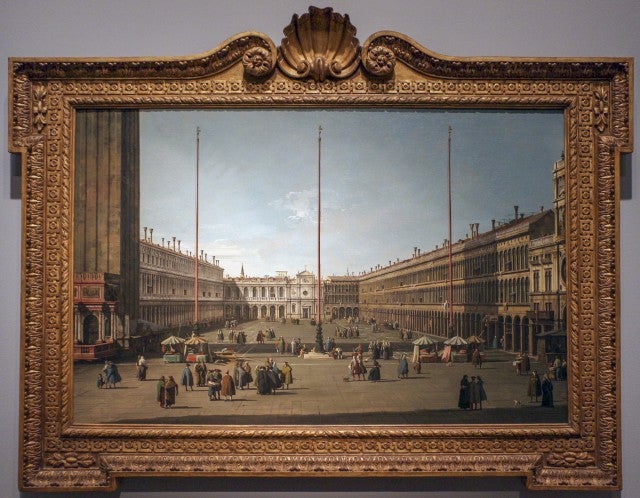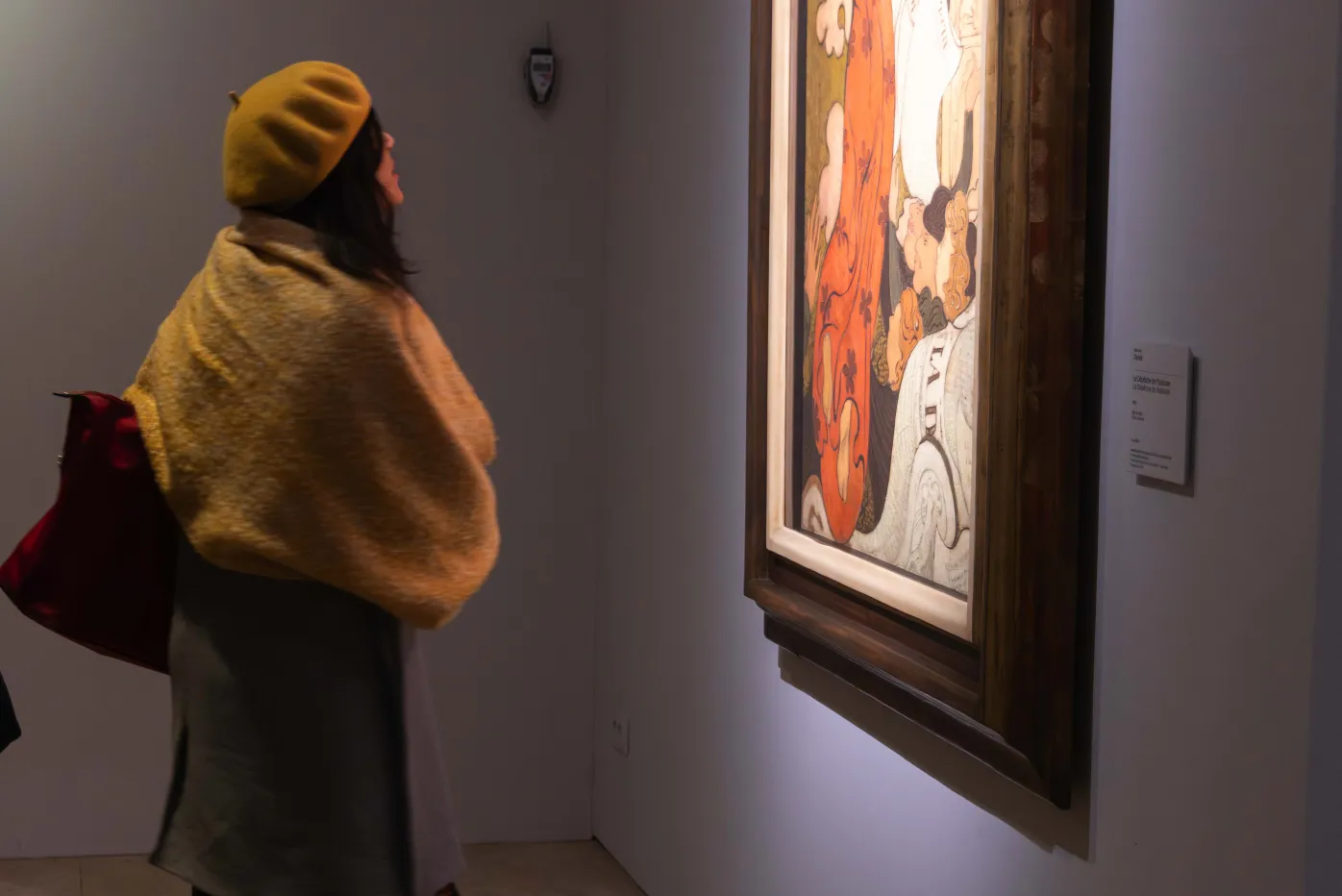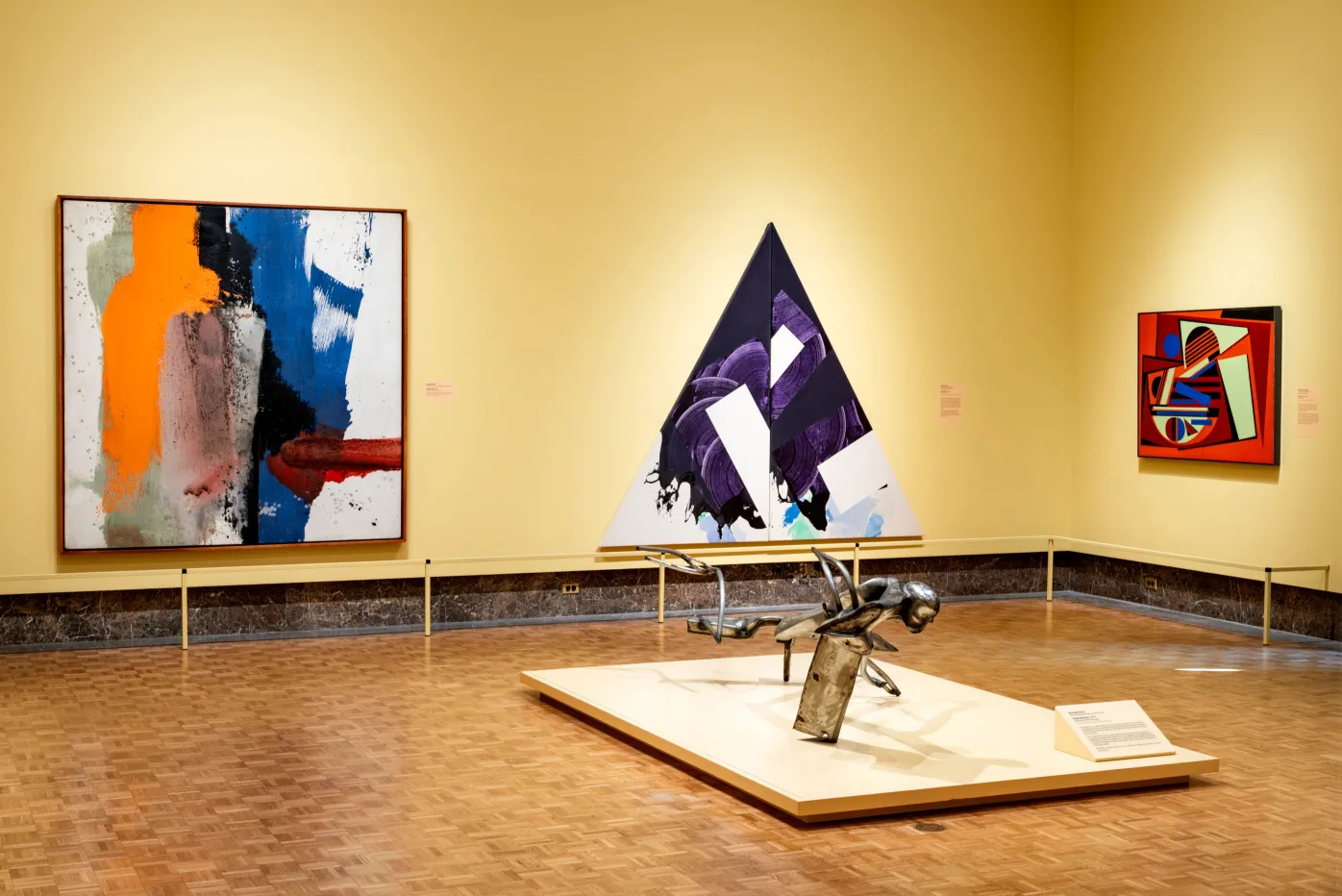From the Director, April 2020
Updated Jul 20, 2022
The importance of empty piazzas
Early in March, I was in Mount Clemens leading a tour of some DIA painting reproductions installed there for residents of Macomb County. It was a fun crowd to be with and I had the opportunity to speak about one of my favorite works in our collection: Canaletto’s Piazza di San Marco. The image shows one of the most famous town squares in the world, located in Venice (Italy), during a sunny winter morning. Scattered throughout the civic space one can observe groups of people indifferently chatting and doing business in the market stands. The artist’s extraordinary technique shows an impressive command of the use of colors and light gradations, allowing him to define this iconic scene with pleasing details and a calm emotion.

Venice was and is today, one of those cities that attracts tourists from all over the world. Its urban plan, built on over 100 islands in the middle of a lagoon in the Adriatic Sea, makes the city a unique place to experience -- no roads, just canals busy with boats and gondolas. During the 18th century, when Canaletto painted the DIA’s Piazza di San Marco, travelers from different parts of Europe visited Italy and stayed, of course, in Venice for a period of time. The trip often lasted between 6 to 8 years (today those who go Italy stay for 6 to 8 days only!) and its goal was to learn from the vestiges of Antiquity, from the inspiring cultural patrimony of the Renaissance and from the life and society of those contemporaries who lived there.
Canaletto lived in Venice and painted this work as a souvenir for one of those travelers, the Duke of Leeds. During the 18th century, there weren’t postcards to buy or cameras to take photos with, so some of the tourists had the wealth to commission works of art, like our Piazza di San Marco, as a memento of their trip. This English aristocrat, once he purchased the work, rolled it up and brought it to England, where it was later framed. That is the reason why our Canaletto is married with a beautiful English Palladian frame, making the object a very special example of the “tourist culture” of the time, known as the “Grand Tour.” As many of you know, the DIA has a suite of galleries dedicated to this subject.
As I look at this painting on our website at home, I can’t stop thinking of the necessary and important emptiness of the piazzas and streets that we are seeing today in Italian cities and many other places around the world. While the canals, streets and piazzas of Venice are deserted, I read in the Italian newspapers that the Venetian waters (once stirred, dirty and muddy due to the aggressive impact of mass tourism) are becoming calm, blue and transparent and that many fish are again populating the seabed of the lagoon -- like at the time of Canaletto. This news gave me hope for a better future soon and strengthen my heart about the importance of loving our planet, whose light and colors are beautiful rendered in DIA’s Piazza di San Marco.

Salvador Salort-Pons portrait, updated Jan 2020
The importance of empty piazzas
Early in March, I was in Mount Clemens leading a tour of some DIA painting reproductions installed there for residents of Macomb County. It was a fun crowd to be with and I had the opportunity to speak about one of my favorite works in our collection: Canaletto’s Piazza di San Marco. The image shows one of the most famous town squares in the world, located in Venice (Italy), during a sunny winter morning. Scattered throughout the civic space one can observe groups of people indifferently chatting and doing business in the market stands. The artist’s extraordinary technique shows an impressive command of the use of colors and light gradations, allowing him to define this iconic scene with pleasing details and a calm emotion.

Venice was and is today, one of those cities that attracts tourists from all over the world. Its urban plan, built on over 100 islands in the middle of a lagoon in the Adriatic Sea, makes the city a unique place to experience -- no roads, just canals busy with boats and gondolas. During the 18th century, when Canaletto painted the DIA’s Piazza di San Marco, travelers from different parts of Europe visited Italy and stayed, of course, in Venice for a period of time. The trip often lasted between 6 to 8 years (today those who go Italy stay for 6 to 8 days only!) and its goal was to learn from the vestiges of Antiquity, from the inspiring cultural patrimony of the Renaissance and from the life and society of those contemporaries who lived there.
Canaletto lived in Venice and painted this work as a souvenir for one of those travelers, the Duke of Leeds. During the 18th century, there weren’t postcards to buy or cameras to take photos with, so some of the tourists had the wealth to commission works of art, like our Piazza di San Marco, as a memento of their trip. This English aristocrat, once he purchased the work, rolled it up and brought it to England, where it was later framed. That is the reason why our Canaletto is married with a beautiful English Palladian frame, making the object a very special example of the “tourist culture” of the time, known as the “Grand Tour.” As many of you know, the DIA has a suite of galleries dedicated to this subject.
As I look at this painting on our website at home, I can’t stop thinking of the necessary and important emptiness of the piazzas and streets that we are seeing today in Italian cities and many other places around the world. While the canals, streets and piazzas of Venice are deserted, I read in the Italian newspapers that the Venetian waters (once stirred, dirty and muddy due to the aggressive impact of mass tourism) are becoming calm, blue and transparent and that many fish are again populating the seabed of the lagoon -- like at the time of Canaletto. This news gave me hope for a better future soon and strengthen my heart about the importance of loving our planet, whose light and colors are beautiful rendered in DIA’s Piazza di San Marco.


